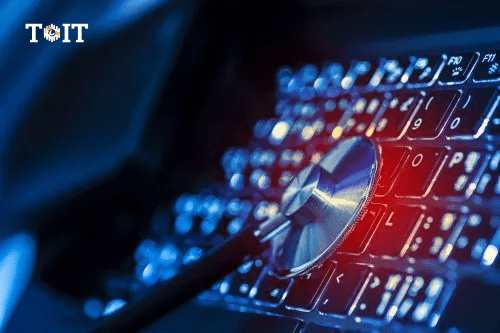This instructor led, online training course includes a deep dive into how to support and troubleshoot Windows 10 computers and devices. Students will learn key skills and knowledge needed to properly resolve issues pertaining to Windows 10 installation, activation, performance, profiles, settings, and device synchronization.
COURSE OUTLINE
- Windows 10 platforms and devices
- Form factors
- Purchasing considerations
- Windows 10 editions and features
- Windows 10 architecture
- Enterprise technical support structure
- The delegated administration model and tiered support
- Infrastructure and the desktop support environment
- Stages of an enterprise troubleshooting methodology
- Incident reporting
- Gathering information
- Developing an action plan
- Implementing the action plan
- Recording the resolution
- Task Manager
- Event viewer
- Reliability history
- Microsoft Message Analyzer
- Diagnostic and recovery toolset (DART)
- Steps recorder
- SysInternals tool suite
- Windows 10 startup architecture
- Windows Boot Manager (BOOTMGR)
- Windows OS Loader
- Windows Resume Loader
- Windows 10 startup process
- Cold startup
- Windows 10 secure boot
- Startup and recovery options
- Recovery tools
- Reset this pc
- BCD store configuration
- Advanced startup options
- OS services
- Identifying failed services
- Disabling services
- Overview of BitLocker
- BitLocker and TPMs
- Recovering a BitLocker encrypted drive
- BitLocker to go
- Device drivers and Windows 10
- Managing device drivers
- Startup device drivers
- Controlling driver installation with Group Policy
- Identifying hardware problems
- Troubleshooting USB devices
- Troubleshooting wireless devices
- Gathering hardware and driver information
- Device replacement
- Vulnerable device types
- Replacement guidelines
- Diagnosing memory
- Troubleshooting disk issues
- Reliability monitor
- Task Manager
- Resource monitor
- Overview of the registry
- Working in the registry
- Enabling remote desktop
- Configuring remote desktop
- Using remote assistance
- Group Policy settings for remote assistance
- Remoting with Windows PowerShell
- Configuration tools
- IPv4 settings
- IPv6 settings
- Network connection process
- Windows defender firewall
- Using IPsec in Windows 10
- Network troubleshooting process
- Troubleshooting wireless communication
- Troubleshooting IPv4 connectivity
- IPv6 considerations
- Tools for troubleshooting
- Overview of name resolution
- Troubleshooting name resolution
- Group Policy deployment options
- Order of processing
- Configuring the Group Policies processing options
- Filtering Group Policy
- Loopback policy processing
- Synchronous and Asynchronous processing
- Management tools
- Verification of GPO application
- Resolving GPO application issues
- Resultant set of policy (RSOP)
- Event viewer
- Resolving GPO application failures
- Authentication and authorization
- Account types
- Sign-in process in Active Directory Domain Services
- Sign-in process in Azure AD
- What are cached credentials
- Password policies
- User properties
- Locked accounts
- Local User profiles
- Roaming profiles
- Troubleshooting roaming profiles
- Folder redirection
- Troubleshooting folder redirection
- Synchronizing to the cloud
- UE-V in a domain for syncing user settings
- VPN Types
- Tunneling protocols
- Authentication methods
- Network policies and network access protection
- Troubleshooting VPNs
- Overview of direct access
- Components
- Connecting to the domain with direct access
- Troubleshooting direct access
- Types of permission
- Inheritance of permission
- Conditional access permissions
- File sharing in Windows 10
- Methods for sharing folders
- What is EFS?
- EFS and certificates
- Recovering encrypted files
- Implementing a recovery method
- Resolving common EFS problems
- Printer components
- Methods of installation
- Printer drivers
- Managing printer properties
- BYOD in modern IT
- Work folders
- External connectivity settings
- Syncing work folder on multiple devices
- Troubleshooting tools
- What is OneDrive
- OneDrive for business
- Resolving sync errors in OneDrive
- The Microsoft Store
- Managing access to the Store
- Sideloading apps
- Troubleshooting UWP apps
- Configuring assigned access
- Using AppLocker to control UWP
- Browser compatibility
- IE compatibility view
- IE enterprise mode
- Troubleshooting edge and Internet Explorer
- Volume activation
- The key hardware components
- Performance monitor
- Optimizing memory and disk
- Servicing branches and update types
- Update sources
- Configuring assigned access
- Managing updates
- Enabling file history in Windows 10
- Windows 7 backup and restore tool
- Previous version tab
- Using Azure backup
- Windows RE tools
Skills Learned
After completing this online training course, students will be able to:
-
Describe the process for planning and using a Windows 10 troubleshooting methodology.
-
Troubleshoot startup issues and operating system services on a Windows 10 device.
-
Resolve issues that pertain to hardware devices and device drivers.
-
Troubleshoot Windows 10 devices remotely.
-
Troubleshoot issues that pertain to network connectivity.
-
Troubleshoot client-configuration failures and issues with Group Policy Objects (GPOs).
-
Troubleshoot issues related to user settings.
-
Troubleshoot remote connectivity issues.
-
Resolve issues that are related to accessing resources from devices that are domain-joined.
-
These issues are not domain-joined.
-
Troubleshoot issues that pertain to application installation and operation.
-
Maintain a device that is running Windows 10.
-
Recover a device that is running Windows 10.



